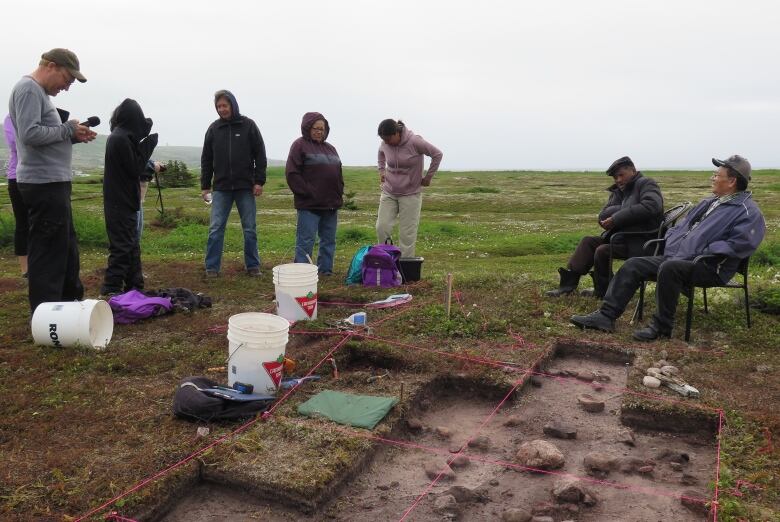History buffs will dig a northern vacation to the Blanc-Sablon archaeological sites
Amateur archeologists can help search for artifacts at the national historic site this summer

Amateur archeologistscan get their hands dirty and join in a dig in Blanc-Sablon this coming July.
The non-profit Archo-Mamu Cte-Nordis working in Blanc-Sablon, a national historic site on the Lower North Shore betweenCte-Nord-du-Golfe-du-Saint-Laurent, QuebecandL'Anse-au-Clair,Labrador where humans have lived almost continuouslyfor millennia.
"It's very rich," saidFranois Guindon, head ofArcho-Mamuand its lead archeologist at Blanc-Sablon.
"We call it a national historic site, but it's actually more than the one site. It's over 60 archeological sites that areknown to date."

The organization, which partners with both Indigenous and non-Indigenous groups, is uncovering artifacts from 8,000 years of human history in the area, which includes Innu and Inuit ancestors, Beothuks and Europeans.
Over a three-week period in thesummer, there were more than30,000artifacts collected from one place in the area,Guindontold CBC Radio'sLabrador Morning Show.
'There's been very little investigation'
The research being done throughArcho-Mamuaims to fillin knowledge gaps about the early contact between Indigenous peoples living in Blanc-Sablon and the first arrivals of Europeans, who initially came to the area to fish and hunt sea mammals, particularly whales.
"The contact between the two groups, the Europeansand the Aboriginals, there's been very little investigation," Guindon said.
"Right now what we're trying to focus on with our project, Archeological Adventure in Blanc-Sablon, is really the first encounters and the history of ongoing interactions between these two groups in the area."

Part of that involves bringing both Indigenous and non-Indigenous participants together to work side by sideto learn about and appreciate each other's history,and work to their strengths to unlock the archeological heritage of the area.
"Archeology has been conducted fordecades by professional archeologists in the North Shore," said Guindon.
"Professionalarcheologists who arein the vast majority non-Aboriginal, who investigate the history and construct versions of Aboriginal history that is not necessarily felt as representative or respectful of the Innuancestors by the Innupeople nowadays,or other Aboriginal people," hesaid.
Visit for half a day, or stay an entire week
Soon amateur archeologists can get in on the action.
In July, non-professionals can goto Blanc-Sablonfor as little as a half-dayoras long as a week toparticipate in digs that aim to find evidence of early contact between Europeans and the Aboriginals already established in the area.

Visitors will be supported by a group of lead archeologists, including Guindon. There will be an element of field training as well, so the experience may be of interest to those who want to work in the field, as well as tourists and community members, Guindon said.
"People are really well treated, really good food, and on top of that they get to experience the beautiful area of Blanc-Sablon, the national historic site, and make a few discoveries."












_(720p).jpg)


 OFFICIAL HD MUSIC VIDEO.jpg)
.jpg)



























































































